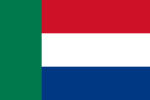The South African Lipizzaners is a riding academy that operates according to the classical model in just outside of Paarl, in the Western Cape in the Western Cape province of South Africa. In contrast to other classical riding schools, only women ride and train the 40 Lipizzaner stallions. Public performances take place every week on Sundays. There is also an affiliated stud farm that provides horses for the academy as well as preserving a valuable genetic outcross pool for European studs.
The roots of the South African Lipizzaners trace to two individuals, both immigrants to South Africa who were each born in Eastern Europe: Horse breeder Count Elemér Janković-Bésán de Pribér-Vuchin of Hungary and horse trainer Major George Iwanowski of Poland.
The Jankovics-Bésán family was long known as influential breeders of Lipizzan horses. The animals they bred included Tulipan, founder of the foundation bloodline of the same name. They also preserved an important branch of the Pluto bloodline. About 1890, the family stud farm at Terezovac (now in Croatia), a part of the Jankovics-Bésán estate, was split up because of an inheritance issue. As a result, a second stud was founded in Cabuna, not far from Terezovac. After the resolution of yet another dispute over the Slavonian property of the Jankovics-Bésáns in the late 1920s, the horse breeding operation then moved to Öreglak in Hungary. In 1944, the owner of the stud, Count Jankovics-Bésán, was forced to flee Hungary due to the advance of the Red Army. He left with eight Lipizzans: six mares and two stallions. He first went to Sünching, Germany, where his parents' stud farm was located, and then he fled with his horses to Dorset, England, arriving at Christmas 1946 at the property of Lord Digby. Then, in December, 1948, Jankovics-Bésán brought the horses to South Africa where he settled in Mooi River in KwaZulu-Natal.



